They're part of our families - they need to be part of our family photo albums, but getting them to say "cheese" for the camera can be frustrating. Although not quite as glamorous as an African photo safari, a photo shoot of your pet can be just as challenging - and just as rewarding. Below are a few tips to maximize your chances of getting that great shot of FIdo, Fifi or Rex.
1: Location Location Location
The first step to a great pet photo is the right location, or at least a bit of straightening the location that you're using. That great shot of Rufus could be ruined with an overflowing trash can in the background or the cord from the vacuum cleaner creeping into the frame. Eliminating distracting objects will produce cleaner compositions, and cleaner compositions produce better photographs. Use a location where your pet is comfortable and familiar with his or her surroundings. Ideally, use a location where the lighting is good (more on that next), without too many deep shadows or bright highlights or reflections. Speaking of reflections - if your location is, for example, a living room with nice, natural light coming through the sliding glass door - be careful not to get a picture of yourself taking a picture of yourself in the reflection of the glass.
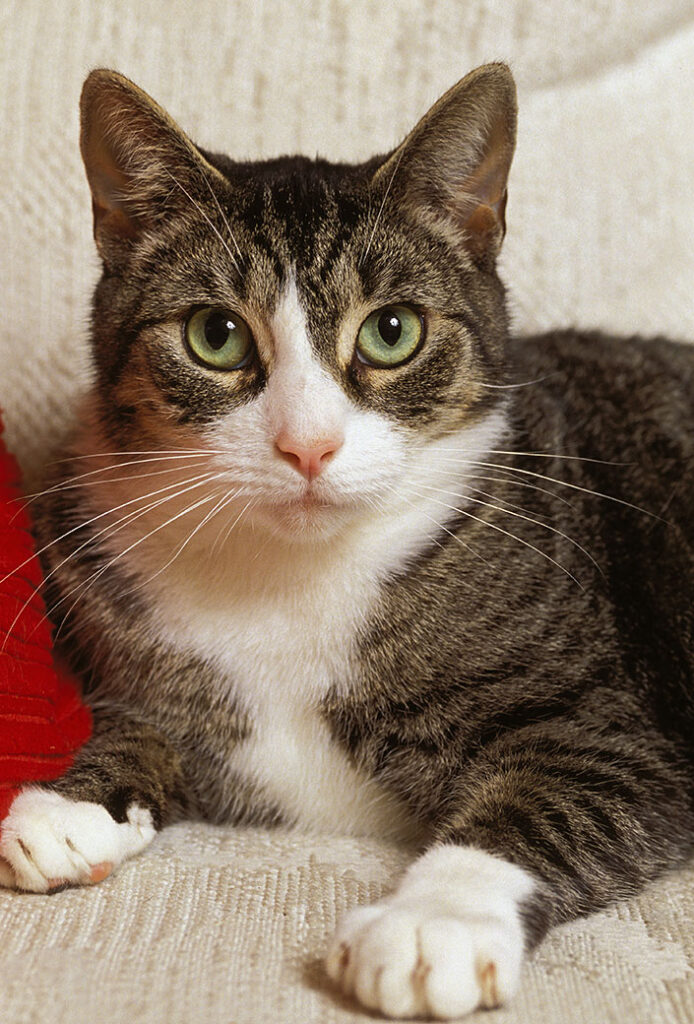
2: Lighting
Whenever possible, go natural! Natural lighting is by far the preferred way to go. Bright sunlight, however, can produce images with harsh shadows and washed out highlights. Ideally, open shade or light overcast provides a nice, soft light and will actually saturate colors. If shooting indoors, consider a room with large windows that allow natural light in. If lighting levels are still too low, consider using a higher ISO before grabbing that flash unit. Avoid electronic flash if at all possible. Flash typically produces an unflattering light with harsh shadows, and may even frighten your pet. On-camera flash will also create "red-eye" in your subjects - (red-eye occurs when a direct light source located near the lens bounces off of the back of your subjects eyeball creating a ghoulish glow in the eyes). If using a flash, try bouncing it off of the ceiling (if the ceiling is light and not too high) or even off a light wall to provide a directional, softer light that will be much more flattering and will eliminate red-eye. A small reflection coming from the surface of the eye (called a catch-light), however, is desirable - especially with subjects that have dark eyes. A catch-light in the eyes is sort of visual evidence that your subject is alive and keeps it from looking like a doll.
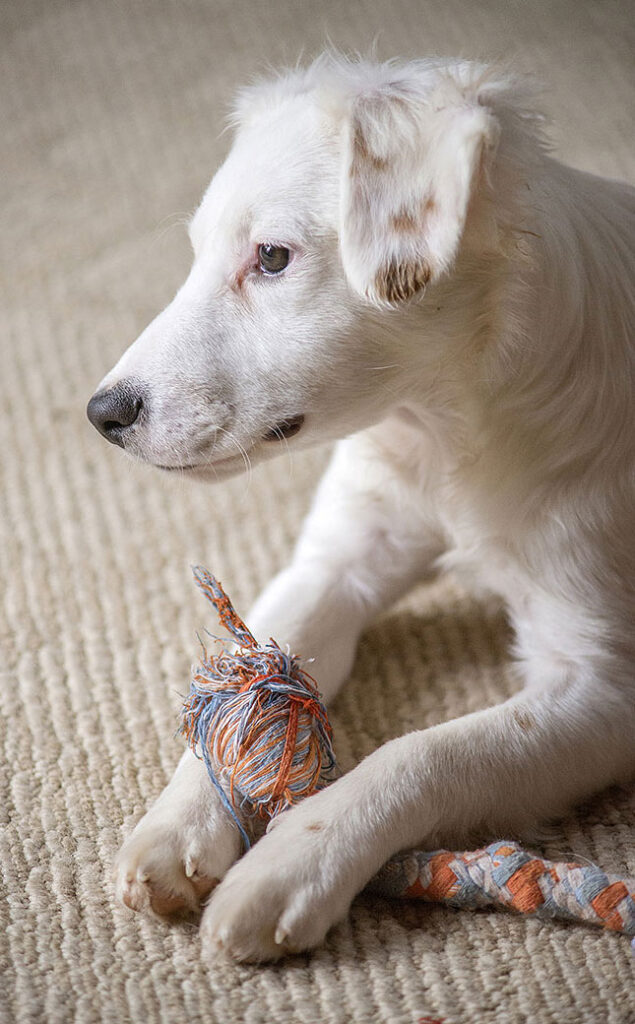
Moon Doggie here was gnawing on his chew toy in front of a sliding glass door which provided soft, natural light for this image.
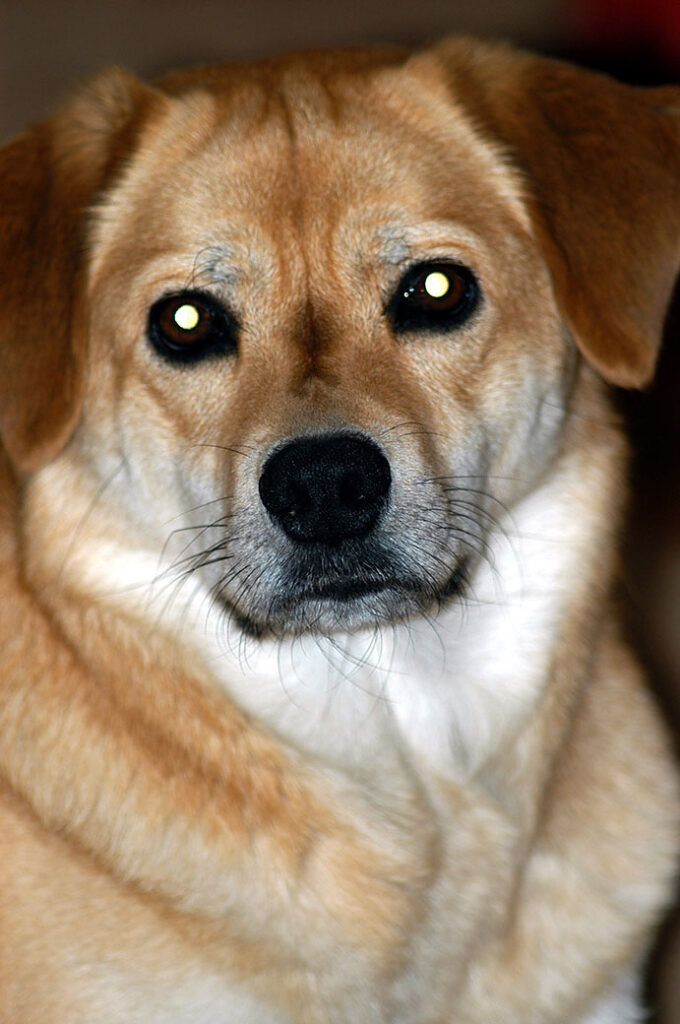
On-camera flash can produce "red-eye" turning your best friend into a demon!
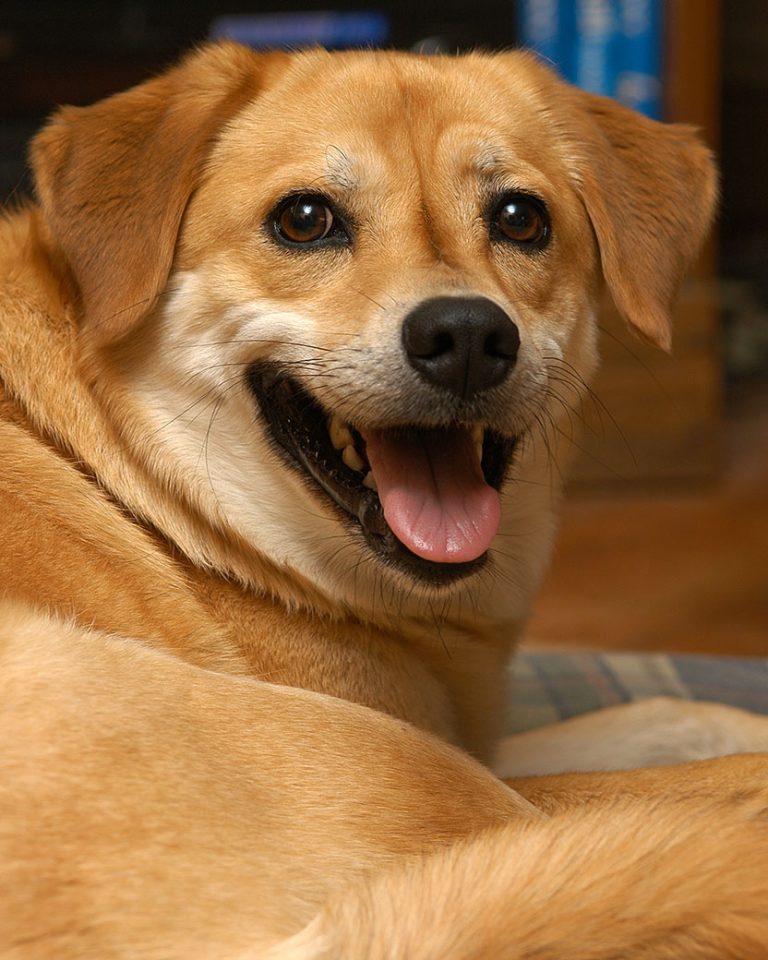
By bouncing the flash off of the ceiling, a softer light is produced and red-eye is eliminated
3: Go To Them
Starting a pet photo shoot by yelling "Come here...sit...stay...come back here...I said sit...and stay..." is a sure fire way to get your subject completely uninterested in what you're trying to do. While whistling or snapping your fingers to get your pet's attention is fine, resist the urge to continuously call his/her name or yell out commands as your pet will tune it out after a short while and lose interest. Letting them relax and then going to them will produce better images.
4: Keep It Calm - Keep It Fun
Your pet can pick up on your moods, so if you are anxious or stressed, your pet will be too. Have patience and be relaxed (but don't become someone that your pet won't recognize - that may stress him out as well) - stay calm and don't get frustrated. Patience is a must when photographing pets - when you're about fed up, that's when your pet will do something great.
5: Get Down To Their Level
The usual photo of your pup looking up at you can be cute - but you will get much better images if you get down to his level - see the world the way he does. Pet photography done right is a form of exercise - you'll be crawling around on your belly, walking on your knees, and constantly moving around to get that special angle-- - but the images you'll get makes it worth it. Don't get frustrated if, when you get down to Rex's level, he wants to get right up in your face to say, "Hi - whatcha doin' down here?" - after a bit, he'll settle down and allow you the distance to start shooting.
6: Capture Who They Are
Your pet has his own personality, and if you can capture that personality in your photo, you'll have a winner! You know your pet better than anyone else, so you probably have an idea of his/her unique expressions and reactions - use this knowledge to create a shot list. If Rover often has a weird way of sitting on his tail that's just adorable, be patient and he'll probably do it, and you'll be ready to get a good shot of it. Stay out of your pet's way and shoot candid photos using a longer lens - let them be them and they'll most likely forget that you're watching them - catch them playing or trying to get that squirrel they've been after for the past three years!
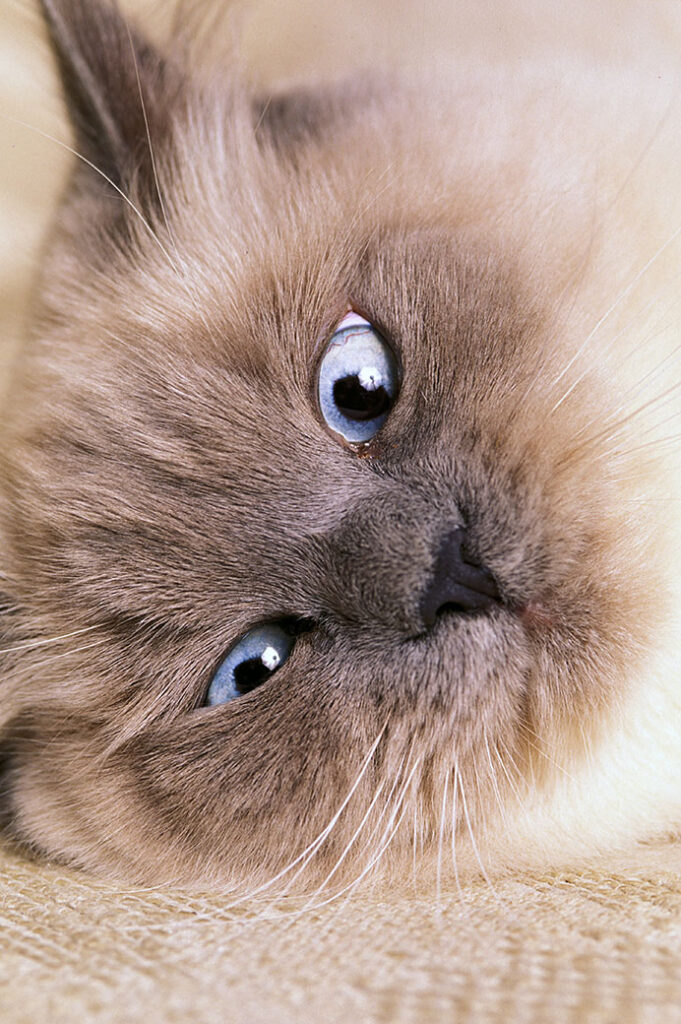
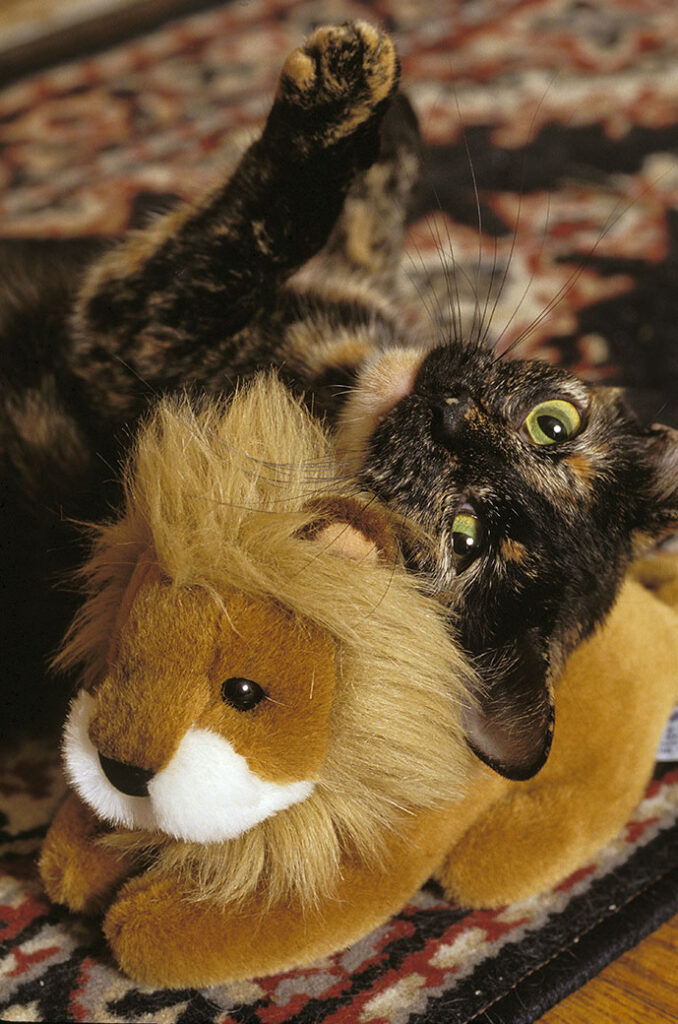
7: The Eyes Still Have It
As with any wildlife or animal - or people, for that matter - focus on the eyes is critical. Even if there are other areas of the pet that is not in focus, as long as the eyes are in focus, the image will probably work. If the eye is not in focus, the image simply won't work.
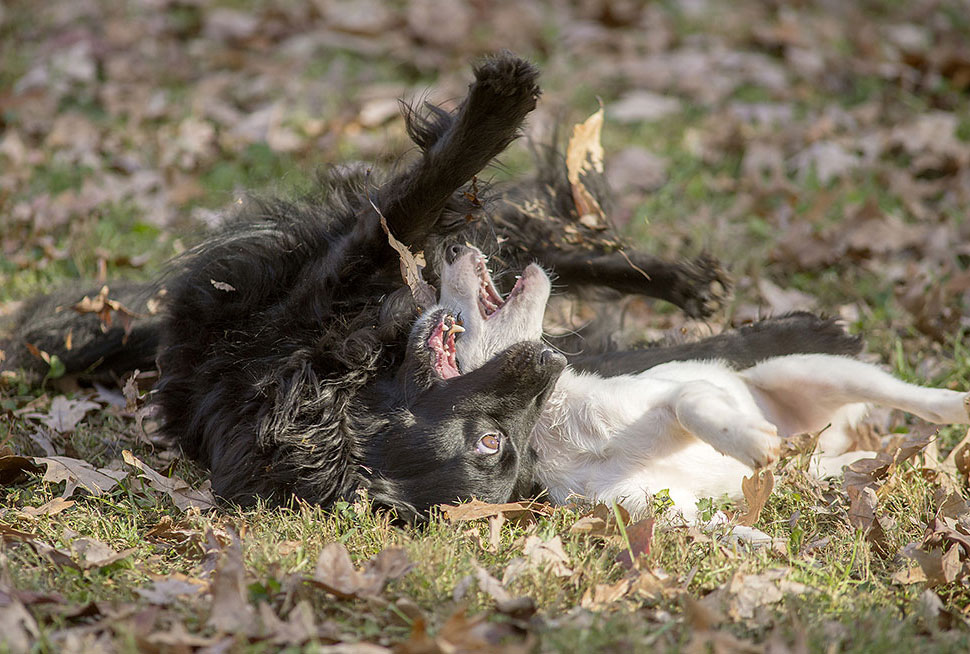
8: Get 'Em Happy
Pets have their own body language that communicates their moods. A dog with his ears laid back or with his head lowered is communicating anxiety - which won't photograph well. A cat with his ears laid back is...well...ticked! If they're not comfortable with the session, it's better to wait for another day. If your pet seems to become anxious easily, a short walk before the shoot will sometimes calm him or her down enough to relax them.
9: Pay Your Models
Use rewards to keep your pet's interest. For some pets, a small treat does the trick (just don't get carried away - I don't want to be responsible if your pet gets fat) - for others a favorite toy or even just a good petting. Rewarding your pet will keep his or her interest giving you more time to get the shots you want.
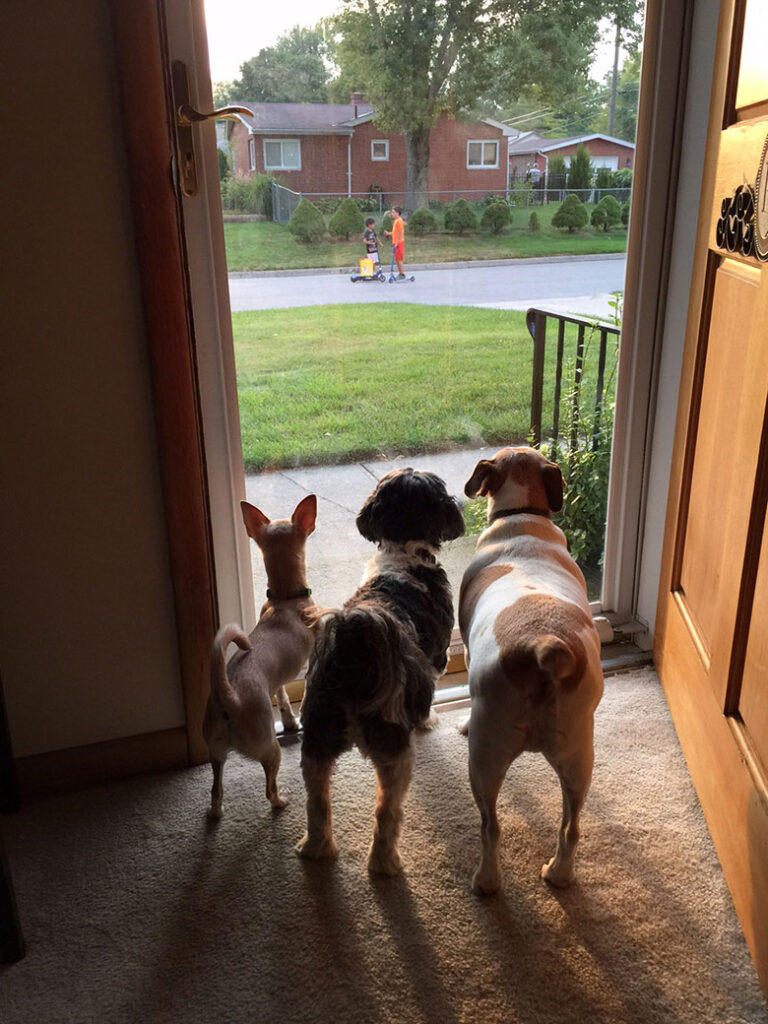
Caught these guys doing what they do best - guarding the neighborhood! I didn't have my DSLR handy, but I was able to get this with an iPhone 4S
10: Equipment
A DSLR with longer lenses will allow you to stay back a bit and not crowd your subject, but great pet photos can be taken with virtually any camera. If your camera's lens restricts you to include a large amount of surrounding environment, then make sure that that environment contributes to the image without overpowering the subject (which should be you pet since this is a "pet photography" entry). If using a DSLR with a long lens, keep in mind that you will need to use a faster shutter speed - not only to freeze any motion from your subject, but to eliminate any camera movement which may blur the final image. A telephoto zoom lens (such as a 70-210mm lens) is a great choice as it gives you the long range for zooming in when Rufus is playing in the yard, and the short range for when Rufus just won't stay far enough away from you.
11: Portraits
Any pet owner loves a beautiful portrait of their pet - but what exactly makes a "beautiful portrait" of a pet? Personally, I prefer a candid approach as opposed to a staged approach. A portrait of a dog that is "staying" because he was told to "stay" comes across as a portrait of a dog..."staying" instead of doing what he would rather do. Try to catch your pet when he or she is "staying" naturally without being told to. Time your photo session for when your pet is a bit tired and won't be as likely to get rambunctious (but not so sleepy that you wind up with a "sleeping" portrait - unless that's what you want). Watch for expressions from your pet that are part of his or her personality. If one of the things you love about your cat is that he's grumpy, then try to catch that "grumpy" expression in the photo. Consider using a medium-long lens (around 100mm) with a wider aperture to throw the background out of focus, or use an even longer lens to fill the frame with your pets face, eliminating the background completely.
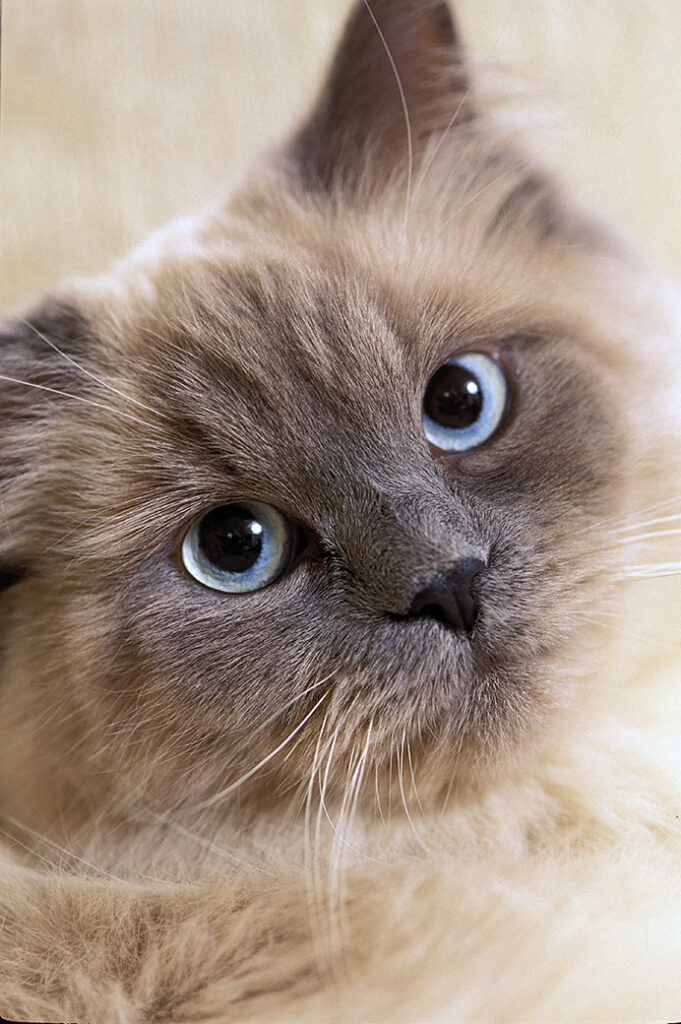
A 200mm lens was used here to crop out everything but this guys face.
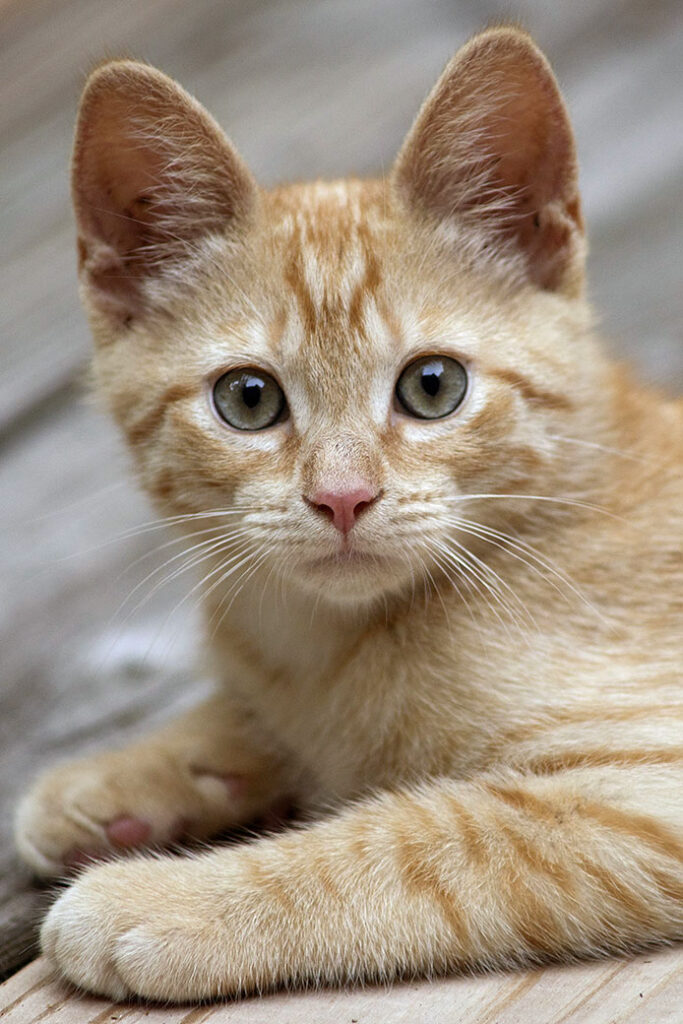
This little guy was a bit skittish - but using a 300mm lens allowed me to get a nice portrait of him without spooking him off.
13: Action
Most pets love to play, and playtime is a great time to capture some great photos, but catching them in the act with a camera can prove to be challenging. To get the best action images of your pet, shoot them when your pet is in the mood to play. A dog that's in the mood to take a nap is probably not going to provide you with a lot of action to shoot. When shooting a romping pet that won't stay in one place, consider backing up and using a longer lens which will allow you to crop in on the action without having to chase after it. Two things that are most difficult when shooting your pets in action are focus and sufficient shutter speed to stop the action.
Focus: Most people have the focus setting on their camera set for single-shot automatic. In this mode, the camera will not fire until the subject locks into focus - well, if your subject is running around, your camera probably won't be able to lock focus and therefor just won't shoot (or shoot too late, causing you to miss the action you were trying to capture). If you want to use the auto-focus when shooting action, consider changing the auto-focus setting to "Auto-Focus - Continuous". With this mode, the camera will constantly update the focus as your subject moves without having to constantly lift your finger to re-focus. With this mode, however, the focus never really "locks" in and the shutter will release whenever the release button is fully depressed (whether your subject is in focus or not). Another option is to go full manual focus. Using manual focus, you can pre-focus on an area that you know your pet will enter (even at play, you probably know your pet well enough to know how and where he or she likes to romp - think of that path in your back yard...where Rufus always runs the same route when on a sprinting spree). Some cameras even have an auto-focus mode that automatically releases the shutter when your subject comes into focus - which should result in a focused image, but you lose control over the precise timing of the shot.
Shutter Speed: Of course, if you want to stop the action of your pets playing, you'll have to use a shutter speed fast enough to accomplish that. If you're shooting outside on a bright day (bright overcast is ideal), then you probably have enough light to use a fast enough shutter speed to stop the action (ideally 1/250 or faster - definitely faster if using a long lens such as a 200mm or 300mm) - but if the natural light isn't bright, or you're trying to capture the action indoors, then you'll have to use larger apertures and/or higher ISO (800 or even 1200 ISO will produce good images with acceptable noise - the digital equivalent of grain - a splotchy "noisy" appearance). A sharp image with a bit of noise generated by a higher ISO setting is preferable to a noise-free but blurry image. If your pet is comfortable with a flash (and the use of one doesn't change his/her "play" mode), bounce the flash off of a light ceiling or large card (or photo umbrella, if you have one) to diffuse the light and avoid red-eye.

When these guys get going, it's hard to keep up with them - but this jawlock caused them to pause long enough to quickly focus a 300mm lens to get this.
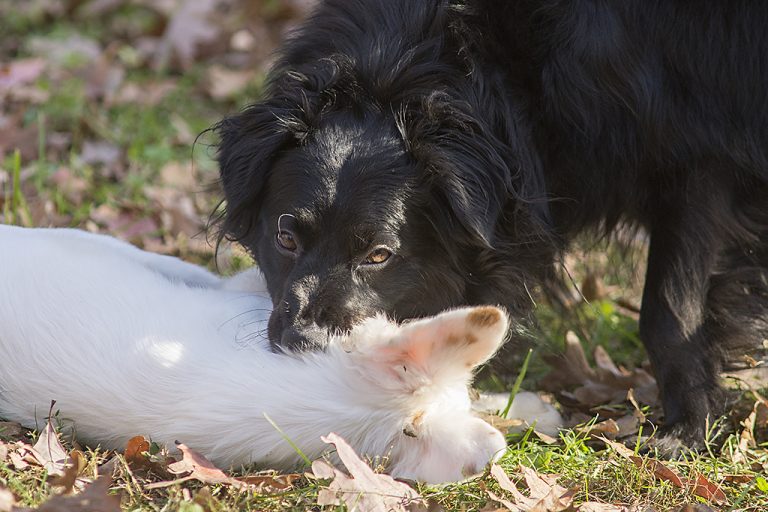
Of course, he figured out that she has jaws too!
Now - get out there and shoot you best friend!
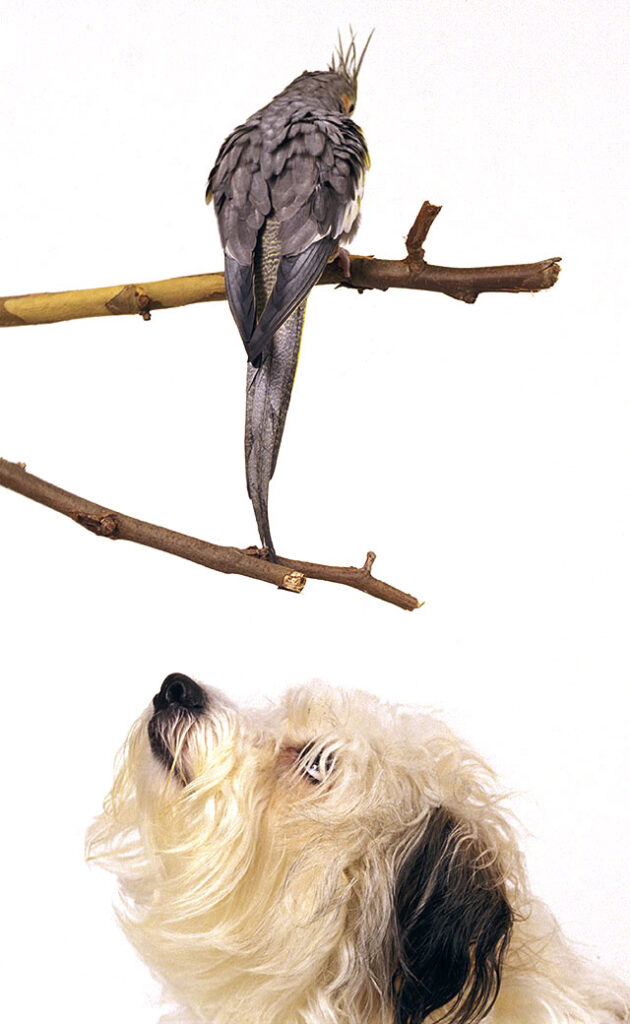
(Just don't let him eat your other best friend)
